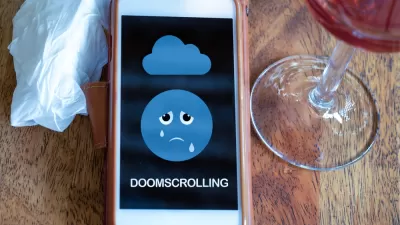For almost as long as social media platforms like Twitter and Instagram have been in existence, users have had a morbid fascination with examples of derelict and destroyed architecture. Social media, however, can be more celebratory of the past.
In a New Yorker article from earlier this week, Alexandra Lange argues for a pivot in how preservation advocates use social media. Lange's argument commences from a discussion of the popularity of "destructoporn," to use the term from Urban Dictionary. Lange writes: "The '–porn' nomenclature suggests pleasure, but I find none in these updates. Each demolition angers me because we systematically undervalue our architectural heritage of all ages…"
Lange suggests that the power of social media has only been partially tapped for the sake of preservation. "The dailiness, even hourliness, of social media makes it a perfect vehicle for documenting each thump of the wrecking ball, each crunch of the backhoe. Its visual slant is ideal for activism wrapped up in pictures."
As for a new direction for the images of preservation activism, Lange writes, "[you] can fight renderings of a hypothetical new building with sympathetic photography of the misunderstood old one, or make your own pretty pictures in pixels with ideas for adaptive reuse."
FULL STORY: Saving Buildings with Social Media

Study: Maui’s Plan to Convert Vacation Rentals to Long-Term Housing Could Cause Nearly $1 Billion Economic Loss
The plan would reduce visitor accommodation by 25,% resulting in 1,900 jobs lost.

North Texas Transit Leaders Tout Benefits of TOD for Growing Region
At a summit focused on transit-oriented development, policymakers discussed how North Texas’ expanded light rail system can serve as a tool for economic growth.

Why Should We Subsidize Public Transportation?
Many public transit agencies face financial stress due to rising costs, declining fare revenue, and declining subsidies. Transit advocates must provide a strong business case for increasing public transit funding.

How to Make US Trains Faster
Changes to boarding platforms and a switch to electric trains could improve U.S. passenger rail service without the added cost of high-speed rail.

Columbia’s Revitalized ‘Loop’ Is a Hub for Local Entrepreneurs
A focus on small businesses is helping a commercial corridor in Columbia, Missouri thrive.

Invasive Insect Threatens Minnesota’s Ash Forests
The Emerald Ash Borer is a rapidly spreading invasive pest threatening Minnesota’s ash trees, and homeowners are encouraged to plant diverse replacement species, avoid moving ash firewood, and monitor for signs of infestation.
Urban Design for Planners 1: Software Tools
This six-course series explores essential urban design concepts using open source software and equips planners with the tools they need to participate fully in the urban design process.
Planning for Universal Design
Learn the tools for implementing Universal Design in planning regulations.
City of Santa Clarita
Ascent Environmental
Institute for Housing and Urban Development Studies (IHS)
City of Grandview
Harvard GSD Executive Education
Toledo-Lucas County Plan Commissions
Salt Lake City
NYU Wagner Graduate School of Public Service




























